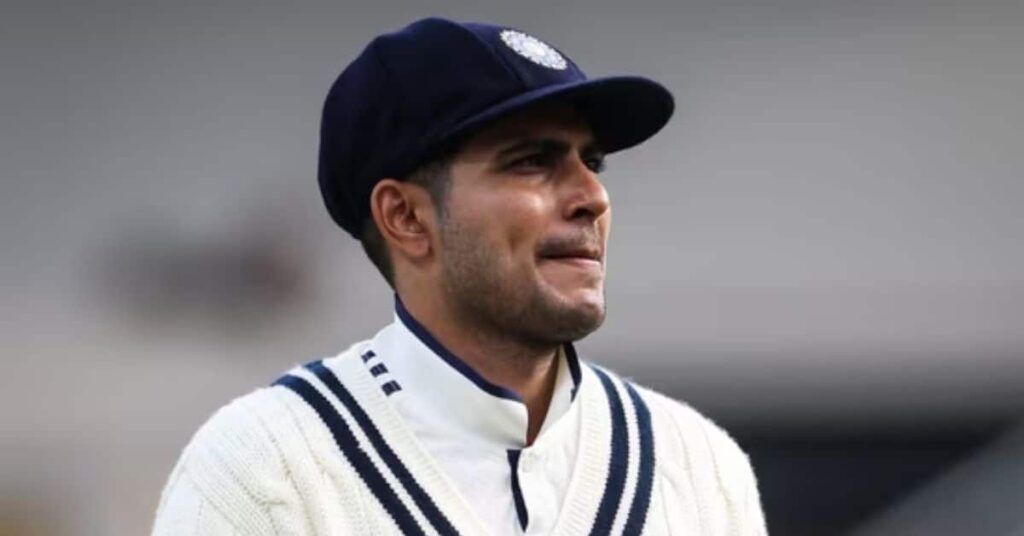Shubman Gill’s record-breaking run in the recently concluded India vs England Test series was nothing short of spectacular. Amassing 754 runs across five Tests, Gill firmly established himself as one of the finest red-ball batters of his generation. His sublime form drew comparisons with greats like Virat Kohli and even Don Bradman, especially as his tally became the second-highest by a Test captain in a bilateral series—behind only Bradman’s 801 runs.
However, despite such heroics, Gill has shockingly dropped four spots in the latest ICC Test batting rankings, sliding from 9th to 13th. This decline has stirred curiosity among fans and pundits alike: How does a batter with such a prolific series fall out of the top 10?
ICC Rankings: The Numbers Game
To understand Gill’s ranking dip, one must dive into the nuances of the ICC’s ranking algorithm, which calculates points based on recent performances, match context, opposition strength, and consistency.
Heading into the fifth and final Test at The Oval, Gill was placed comfortably in 9th position. However, a modest score of just 32 runs in that decider came at a cost. Since the ICC rankings heavily weigh performances in the most recent matches, his failure in a high-stakes game led to a sharp drop in rating points, pushing him down to 13th.
This outcome underlines the dynamic and sometimes unforgiving nature of the ICC ranking system, where one poor outing—despite a series of excellence—can impact a player’s standing significantly.
India’s New Skipper: Bright Future Despite Setback
While the rankings slip may sting, it does little to dim the larger narrative: Shubman Gill’s ascendancy as India’s new Test captain is off to a brilliant start. Leading the side in a challenging five-match series against England, Gill showcased resilience, temperament, and remarkable batting flair.
His 754-run haul included three centuries and two fifties, often under testing conditions. More importantly, his leadership helped India draw the series 2-2, maintaining their formidable home record and signaling a fresh era in Indian Test cricket.
Siraj and Krishna: The Pace Twins Shine Bright
The fifth Test wasn’t just about Gill’s stumble—it was about India’s pace firepower rising to the occasion. Mohammed Siraj, named Player of the Match, delivered a sensational performance with 9 wickets (4 in the first innings, 5 in the second), helping India secure a thrilling 6-run victory.
Siraj’s match-winning effort saw him leap 12 spots in the ICC Test Bowler Rankings, reaching a career-best 15th position with 674 rating points. It’s a testament to his evolution as a strike bowler in all conditions.
Joining him in the spotlight was Prasidh Krishna, whose 8 wickets in the Oval Test—including a crucial four-fer in the first innings—catapulted him 25 places up to 59th, also marking his highest career position in the ICC charts.
Yashasvi Jaiswal Breaks Into Top 5
India’s batting riches were further evident with Yashasvi Jaiswal’s stellar knock at The Oval. The young opener’s century in the final Test earned him a three-place jump, pushing him into the top 5 of the ICC Test batting rankings for the first time, with 792 rating points.
Jaiswal’s consistency and attacking intent have turned him into a match-winner at the top of the order, and his upward trajectory in the rankings underscores his growing influence.
Meanwhile in England Camp…
It wasn’t all gloom for England either. Gus Atkinson and Josh Tongue, both of whom grabbed 8 wickets each in the final Test, were rewarded with career-best ranking boosts. Atkinson broke into the top 10, while Tongue jumped 14 places to 46th, signaling a bright future for England’s fast-bowling depth.

